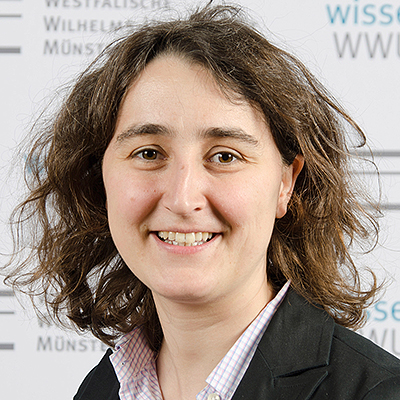“Quality is the top priority”

Prof. Rentmeister, what scientific topic are you working on right now?
I’m CiM Professor of Biomolecular Label Chemistry. My team and I label biomolecules, and we're especially interested in RNA. We develop and produce so-called probes, along with the appropriate chemistry, to label biomolecules in cells so that they are fluorescent under the microscope, for example. Another important aim can be the selective isolation of certain biomolecules from the complex surroundings of a cell. The chemical reactions have to be highly selective and, at the same time, proceed under very mild conditons. After all, we want to carry out these reactions on and in living cells – and these react extremely sensitively to their surroundings.
The transition from chemistry in a test tube to chemistry in a living cell poses completely new challenges for biochemists. It often makes life difficult for us, but of course it’s also a fascinating field of research. “Washing out”, which is done in the case of cells that are fixed and dead is not possible with living cells. This is why fluorogenic labels which only light up if a biomolecule has been successfully labelled represent a new field of research. Reactions and labels which can be triggered by light, making them controllable in space and time, are also a hot topic.
What characterizes you personally as a scientist?
I would describe myself as someone who is determined, critical and always solution-oriented. This also includes the search for win-win solutions when working with other people – irrespective of whether they are undergraduates, PhD students or colleagues.
What’s your great aim as a scientist?
I want to label and track selected RNAs in cells – in other words, follow the paths they take. In principle, this is already feasible, but a direct transfer to living cells is tricky. If we can make biological processes visible, it will help us understand them. After visualization and understanding, the next step will be to control them. To achieve that, it will be imperative to have highly selective labelling methods.
Can you remember your happiest moment as a scientist?
My team and I tend rather to be cautious characters. We are very critical and scrutinize our good result to make sure that we haven’t overlooked anything.
And what was your biggest frustration?
Chemists start to develop a high level of frustration tolerance already when they are undergraduates. We don’t let our frustration boil over. The important thing is that we always work accurately and check all parameters. It’s something I teach my co-workers. They should be able to rely on their experiments so that, if anything goes wrong, they can find out the reason why.
How much artistry, creativity and craftsmanship is there in your scientific work?
In some respects chemists are academic craftsmen. We need certain skills to be able to carry out our research. Creativity, though, is even more important – because it’s the only way to create molecules which have the desired properties but which have not yet been devised by nature. In a certain way, that’s definitely an art, too.

